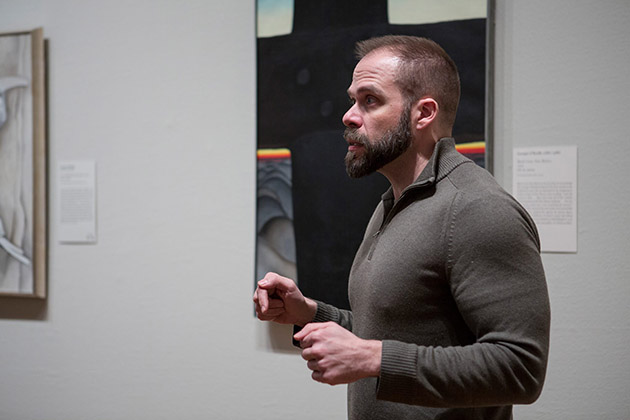Chicago's contribution to contemporary gay art shouldn’t be underestimated. David Getsy, chair of the art history, theory, and criticism department at the School of the Art Institute of Chicago, is about to moderate two public conversations on that topic. Dangerously Explicit: Painting the Gay Male Experience takes place March 27 at the Chicago History Museum,
Artist and art critic Pedro Vélez recently wrote that “Queer identity has strong presence (*a bit too much, some call it an art world ‘mafia’)” in the 2014 Whitney Biennial. What do you think about this idea of a “gay mafia” in the art world?
This kind of accusation is a subtle way of making people who declare their difference feel unwelcome. This often happens. Any time there is an emergence of a cluster of queer or otherwise different people who are presenting works about their own experiences in mainstream venues, the accusation is always that there is something insidious and devious at work—that they couldn't possibly have done this on their own.
Historically, the arts and humanities have tended to draw people whose life choices and experiences have taught them to defend not just their own voice but also difference. This is often stereotyped as gay men having an artistic bent or something like that, but to be honest, in the twentieth century art was a tool for thought, for critique, and for expression. Why wouldn't the people who don't see themselves represented every day go to a place where individual expression and self-reflexive questioning is valued—and try to make works where they and others can see themselves?
In the Chicago art scene, one of the things that's really exciting over the past decade is the way that queer and trans artists are nourishing each other. An exciting community has formed of artists working on topics of sexual and gender non-conformity—of queer and trans art. (Some examples off the top of my head are Doug Ischar, Dutes Miller and Stan Shellabarger, Edie Fake, Elijah Burger, Mary Patten, and Aay Preston-Myint, but there are many more.)
That's how these things happen. It's a series of small interactions that cumulatively produce something that looks like a shared intelligence, even though there isn't a shared intelligence—it's momentum.



